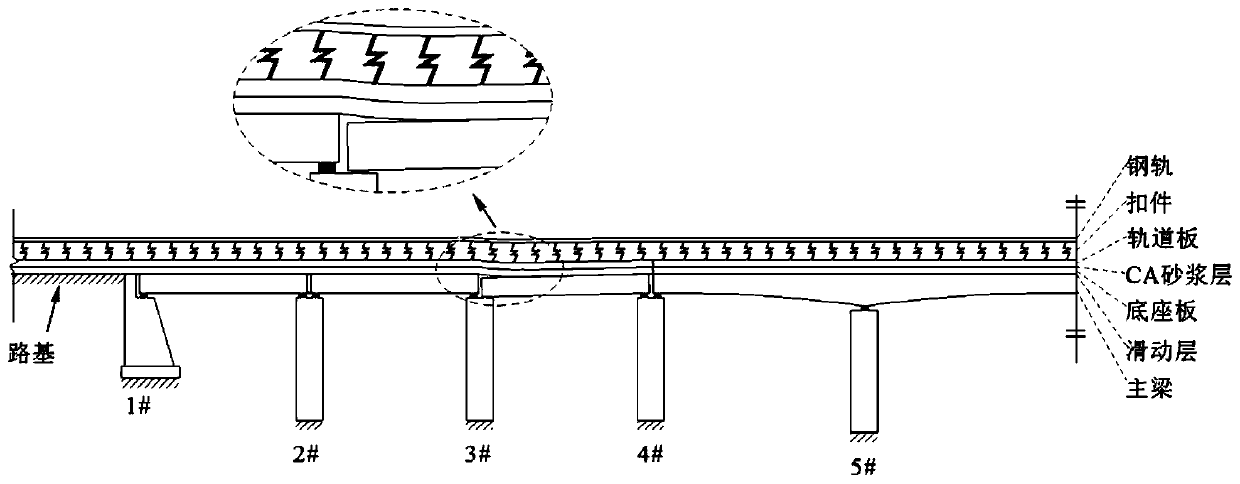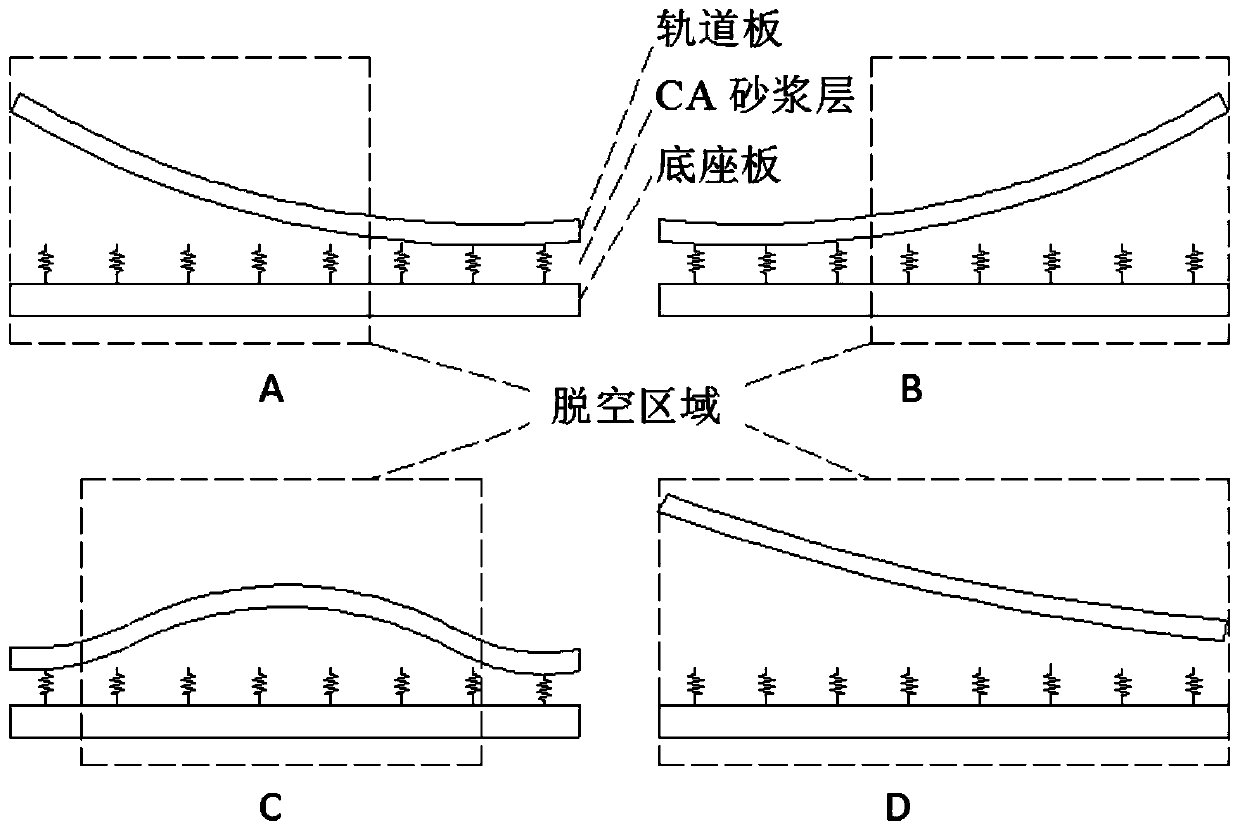Method for calculating track mapping deformation after earthquake-induced damage of high-speed railway bridge
A technology of high-speed railways and calculation methods, applied in the direction of tracks, track maintenance, roads, etc., can solve problems such as increased wheel-rail interface disturbance, aggravated train vibration, and little research on the mapping relationship between deformations
- Summary
- Abstract
- Description
- Claims
- Application Information
AI Technical Summary
Problems solved by technology
Method used
Image
Examples
Embodiment 1
[0103] 1. Basic assumptions
[0104] In order to establish the calculation model of the mapping relationship between the deformation of the bridge structure and the deformation of the ballastless track structure, the following basic assumptions are made:
[0105] 1.1 The mapping analytical model (Analytical model-1, referred to as "AM-1") when the contact between layers of the track structure is considered elastic:
[0106] For the unit slab ballastless track, its structural diagram is as follows: figure 1 as shown,
[0107] (a) The track structure and main girder are simulated by composite beams, in which the track slab is regarded as a free beam at both ends without interconnection in the longitudinal bridge direction; since the base plate and the beam body are firmly connected by pre-embedded steel bars, it is assumed that the deformation of the two is coordinated ( For convenience, the two are collectively referred to as the main beam in the following text);
[0108] (b...
Embodiment 2
[0183] Calculation example: In order to verify the applicability and accuracy of the theoretical model, the unit slab ballastless track-continuous girder bridge system is taken as an example.
[0184] Based on the large-scale general finite element software ANSYS, the finite element model (Finite element model, referred to as "FEM") of the unit slab ballastless track-continuous girder bridge system was established. The spring in the subgrade section uses the Combine 14 unit, and the mortar layer uses the nonlinear spring unit Combine 40; the deformation of the bridge structure such as the bearing is simulated by imposing displacement constraints at the corresponding beam body bearing positions, and the simply supported boundary is used at the end of the rail beam. Eliminate the rail boundary effect of the subgrade section by taking enough calculation length of the subgrade section.
[0185] Table 1 Unit slab ballastless track-bridge system parameters
[0186]
[0187] Note...
PUM
 Login to View More
Login to View More Abstract
Description
Claims
Application Information
 Login to View More
Login to View More - R&D
- Intellectual Property
- Life Sciences
- Materials
- Tech Scout
- Unparalleled Data Quality
- Higher Quality Content
- 60% Fewer Hallucinations
Browse by: Latest US Patents, China's latest patents, Technical Efficacy Thesaurus, Application Domain, Technology Topic, Popular Technical Reports.
© 2025 PatSnap. All rights reserved.Legal|Privacy policy|Modern Slavery Act Transparency Statement|Sitemap|About US| Contact US: help@patsnap.com



